#first Woolworth store
Explore tagged Tumblr posts
Text

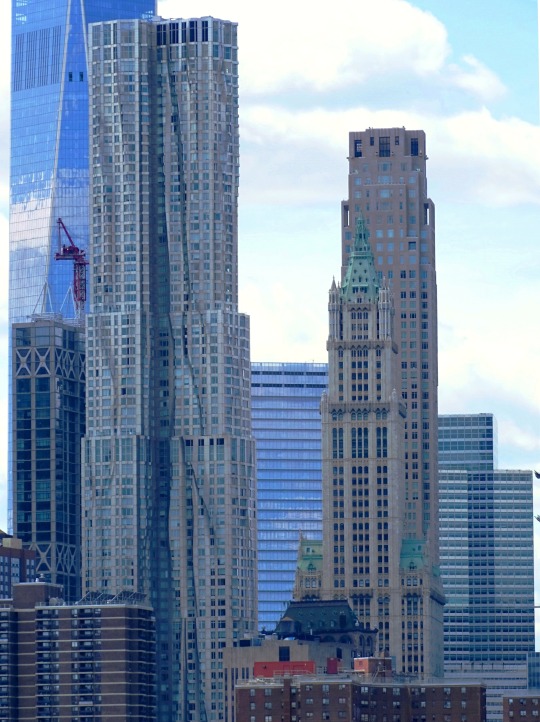







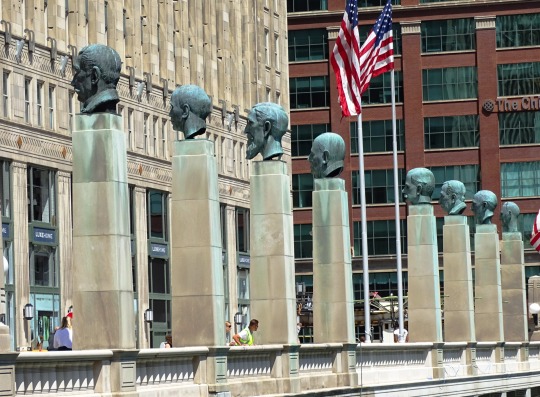


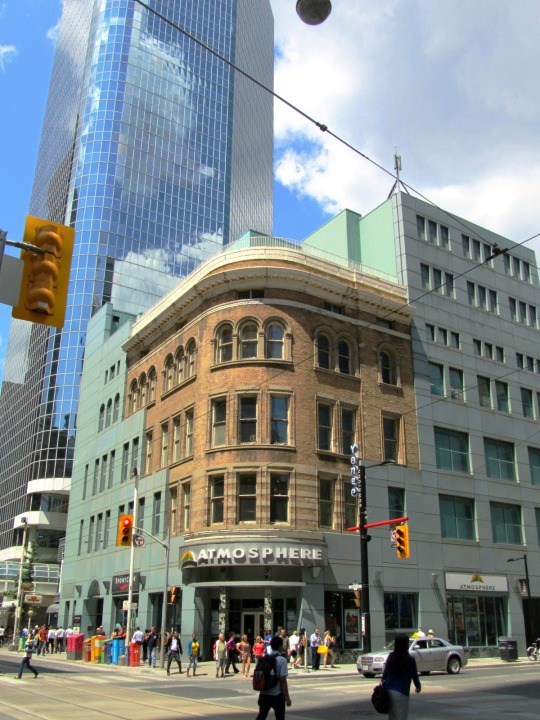


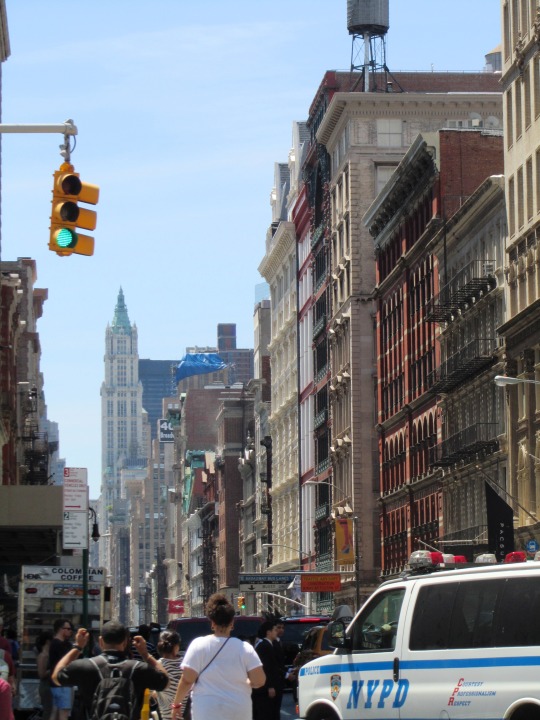
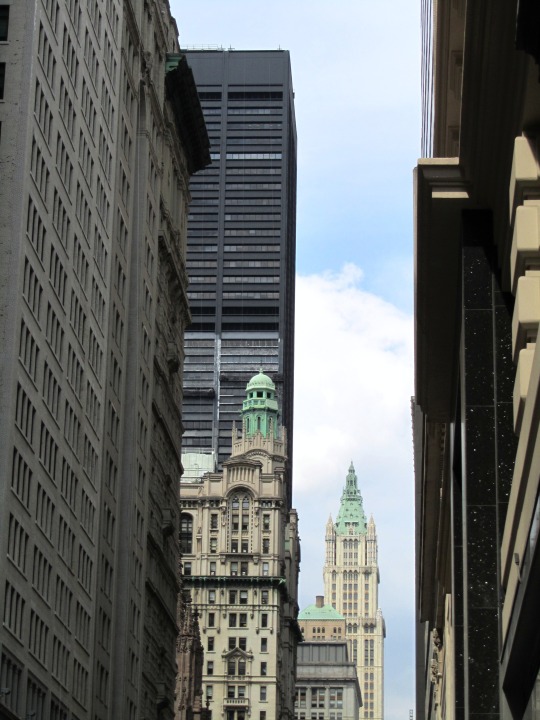




In Utica, New York, Frank Woolworth opened the first of many of five-and-dime Woolworth stores on February 22, 1879.
#Frank Winfield Woolworth by Milton Horn#Frank Woolworth#opened#first Woolworth store#22 February 1879#145th anniversary#US history#F. W. Woolworth Building#Cass Gilbert#Manhattan#neo-gothic#cityscape#architecture#skyline#skyscraper#East River#New York City#USA#summer 2013#Yonge Street#Toronto#Canada#summer 2015#travel#landmark#tourist attraction#original photography#vacation#Ontario#2019
5 notes
·
View notes
Text



The first F.W. Woolworth store was opened by Frank Winfield Woolworth on February 22, 1878 in Utica, NY. #OnThisDay It was marketed as “Woolworth's Great Five Cent Store.” Pictured various Woolworth’s.
44 notes
·
View notes
Note
Hiii!!! I love your fics sm ahhdhsbsb 🤭🤭🤭
Can I request a Ray or Egon one-shot with a GN or male rockstar reader? It could be present time or college days, I think them having a bit of gay panic would be fun, have a good day!!
Warrior in Woolworths
Pairing: Ray Stantz/Rockstar!Male!Reader
Warnings: Minor violence/blood

Shoutout to the Ray fans out there I salute you all
Better formatting on Ao3!! (italics and such)
Ray pulled his trusty leather jacket closer to himself, hands in his pockets when a chill ran through the dark street. If he was going to this thing, he was gonna look the part.
He was given two tickets to a concert held in a venue he just couldn’t find. They were a gift- given to him by the short redheaded girl in his advanced algebra class for bringing all her work when she was stuck with tonsillitis.
“Gee, thanks!” Ray took the two slips of paper from her in the empty hallway. He pursed his lips, willing to take a chance. “Would you like to come with me?”
Her smile weakened. “I’m sorry. My boyfriend wouldn’t want me to.”
That crossed one person off the list, at least. In the moment, he wasn’t really trying to insinuate any sort of date. Back in high school, most of his friends were girls, and they loved live music. Their moms would get tons of pictures before they left and thank him for being such a good friend. College was surely complicating things.
He would’ve asked his sister, or one of his cousins, but they had their own things going on. Besides, the name of this band seemed a bit too extreme for his Aerosmith family. Where was this place, anyway? He’d circled the block at least twice, and the little part of New York felt more like a place where good kids whose parents paid for tuition shouldn’t be strolling around.
He had his friends- they were guys. Apparently guys were the ones to invite to concerts. But Peter wanted to have an early night. Which corner store did he have to solicit to get directions around here? Egon was a laughable option. Ray finally stopped his aimless wandering when a few kids in denim ran down the street, skipping down some steps and into the basement of a dimly lit dive.
Ray followed, the excitement and body heat of the minuscule hall spilling out when he opened the door, squeezing through and trying to hand a ticket to someone he assumed was supposed to handle them, though he was slumped back on a stool, smoke surrounded him. Ray just slipped the paper into a cardboard box filled with others, suddenly anxious at how packed it was. Even more smoke hazed up the air, floating up to a skylight and dancing above the heads of those who chose to hang off a balcony that wrapped around the room. He found himself imagining what this place used to be, velvety red remnants of what was once a hidden and cozy Italian place or even a comedy club covered up by large stage lights, posters, and spray paint.
Your little group made it out amidst screaming. Lots of screaming, so loud that the uproar alone shook his shabby barstool from the ground up. It was dark, the only things visible above countless people were the silhouettes of instruments and their attached handlers.
No introduction, no opener, just pure noise. Even bigger than the screaming, bass and bass drum fighting for capital over the space. Guitars cut through everything like a laser, sharp and clear. Everyone was going absolutely insane, and Ray just needed a second- just a second to pick apart sound and voices and words.
The first song was over as soon as it started, a commotion of applause around him. The lights finally came up, ever so slightly, and he was starting to understand the hype.
There you were, guitar around your shoulders and gripping a microphone like your life depended on it. You looked like you’d gone mad, in chunky boots and reflective leather.
“I’m pissed,” your voice rang out into the mic, and you were greeted with cheers across the board. When those died down, you started again. “People are trying to change what we do. They’re trying to make it something it’s not.”
You really knew how to get a crowd going. And maybe the butterflies in his stomach coming out of their cocoons- you sounded nothing like he expected. “Rock isn’t digestible. It isn’t a commodity. It’s dirty, it’s improper, it’s starved.”
The next song started after that. Harder, more aggressive, but more vocals than anything. You sang even better than you sounded. Ray could feel his bones rattling, hair sticking up on every part of his body as your fingers glided across your guitar. You played even better than you sang.
He stopped keeping track, at some point just feeling like pure energy. He was in a vacuum while the drummer hit the snare, a raging and vibrating vacuum. But it was far from unpleasant. This was a room full of people who had been wronged, downtrodden, ignored, and this was their release, musical or otherwise. Someone brought out a saxophone, something he could appreciate as a fellow woodwind. It helped that the frontman- frontperson? Was pretty damn good at what they did.
There was a slower song, sardonic and dark, where you were practically having relations with the microphone stand. Everything about you was teeming with a gnarly power, and Ray couldn’t even make out your features. Only the shine of white light bouncing off your clothes and accessories. You kept playing guitar like it’d kill you otherwise, and it all made him incredibly flustered. He clutched his hand over his heart. He wanted you bad, and he couldn’t even tell if you were a girl or not.
Ray wished it would never end, feeling the adolescent indignance and passion flow through him like it was intravenous. But, all good things had an expiration, and your band was backstage not long after midnight. He felt he’d be imposing if he mingled among the revolutionaries, but he needed to walk a bit, before he got too excited and tried to hit something.
When Ray found his car the next street over, he could barely get off the sidewalk when a police officer blew into his whistle.
“How long have you been parked here?” The man had his hands on his hips.
Ray blinked. “About an hour or three. Is that a problem?” The officer pointed up to a sign, which read that parking had been restricted here for most of the night.
He pulled out a pad of paper, muttering about “college kids” and “no one listens”, when Ray’s pulse quickened, clammy hands rubbing the nape of his neck. He’s never gotten a ticket before- whether that was because he was a good driver or conveniently avoided the cops was beside it all. There’s no way he had the money to pay for it, and no way he’d wanna bother his parents for it. How much were tickets, anyway?
“What’re you doing?” An unfamiliar voice sounded from down the sidewalk, somewhat hidden in darkness.
The officer squinted and went back to scribbling out the fine. “Mind your own business and go home,” he shouted back.
“You can’t give him a ticket, I know that guy!”
He looked between Ray and the stranger, pen in hand. “You know this guy?”
“Duh.” There was a second of silence. “That’s Steve.”
The policeman stared at Ray like he was a felon, and Ray stared back just as dumbly. He’d go along with anything, if it kept his record clean. He stuffed his things back in his blue shirt pocket, stalking off slowly and continuing to talk of “damned punks” and “too old for night patrol.”
Ray stood under the orange street lamps, dumbfounded with his back against the passenger door. His wallet’s savior emerged from the shadows, and his breath hitched when he got a better look. You were the one on stage! With the guitar and the voice and a lot of dark stuff under your eyes. Crazy hair, at least to his understanding. You don’t see more than 5-6 different styles at an Ivy. Chains and rips on taut black leather- you definitely don’t see that at an Ivy. You had your jacket tied around square hips, exposing arms and shoulders with discreet tattoos. Self-done, perhaps? Regardless, that was NYU behavior, not Columbia. And you weren’t a girl. Should he still want you?
“I don’t think your name is really Steve.”
His mouth opened and closed while he tried to remember English. “No. No, it’s Raymond.” He cringed inside. Why use the objectively lamer version of his name? He’s embarrassing himself in front of the funky rockstar. “Ray,” he corrected.
And the funky rockstar smiled at him. “You gotta fight back, Ray. Don’t let them take your $2.”
“You lied to a policeman over $2?” Ray questioned some of the virtues he’d been raised on.
You shrugged. “Money is money. You shouldn’t get hassled for parking on the street.” Huh. He’d never thought of it that way. “Did you enjoy it?”
“Enjoy getting a ticket?”
“No, dude, the show.”
Oh yeah- he was at a concert for a super awesome band and their frontman, as he just found out, just covered for him. “Yeah, it was great.” It was more than great, dummy. It was electric, exhilarating, galvanizing, bewildering. “It was really, really great.”
Ray felt a tinge self conscious as you watched him, unblinking, fearing he had offended you somehow. “You don’t go to these things often.”
He nodded, guard dropping a bit. “What gave it away?”
You pointed out the clunky glasses tucked into the pocket of his shirt. “My mom said I should bring them wherever I go,” Ray laughed bashfully, pulling them out and sliding them into his dark jeans.
He felt proud at making you snicker. “It’s cool. Half my bandmates wear contacts.”
“Where are they, anyway?” Ray realized you were out and about without them. He was probably holding you up from something.
“They’re around here, somewhere. We’ll run into each other eventually.” Your attention shifted to his Camaro, running a hand over the paintjob. “Your car’s awesome, man.”
He already knew that, but the confirmation was nice. “Really? It still needs work.”
“Can’t even tell,” you peered into the passenger side window, “I’ve only seen these when they’ve been stolen.”
Ray didn’t wanna just leave you here, if that was true- even though you seemed more than capable of fighting off a few muggers. Perhaps he just wanted more time with the cool musician. “Wanna take a drive?” he ran a thumb over the back of his own knuckles. “See if we can find your friends?”
Ray went to a concert, alone, got a parking violation, and there’s a really peculiar guitarist sitting in his passenger seat, Doc Martens on his dashboard. And he couldn’t even bring himself to care about your shoes scuffing the interior fabric.
“Where’re you looking to go?” He took note of how empty the city street seemed, the only light coming from lamp posts and 24-hour shops and restaurants, occasionally poking out of home curtains.
“Wherever you’re willing to take me.” Ray swallowed, bringing the car to life as you sat back, hands behind your head. He hadn’t been with many girls romantically, but they’d never been so comfortable so soon- not even his other male friends, let alone a stranger. A very alluring stranger.
You turned your head to face him casually. “No one gave you shit, right?”
He drove slower than you should on a residential road. “I don’t think so. I was at the bar the whole night.”
“Good.” Your belts and chains made clinking sounds as you crossed one ankle over the other. “The bar’s no fun. Find the guy messing with the speakers and tell him you know the color of my underwear, that’ll get you up close.”
“I’m not sure my guess will be correct.”
“It’s always green on show nights, I can show you-” Ray struggled to keep his eyes on the turn he was making when you shimmied up, thumbs in the hem of your pants.
“I believe you,” he successfully got onto another street without veering onto the sidewalk. “When’s your next show?”
Ray had a small grin as you slumped back down. “Not for a crazy long time. Not here, at least.” That news sucked. He should hassle you for a phone number, if that wasn’t too bold. So you could be pen-pals, obviously. “We’re friends, right?”
He kept driving, not entirely sure of where he was going and scared he’d instinctively take the route back to his dorm, but at ease at the feeling of rolling rubber on asphalt. “In all of 10 minutes.”
Your laughter filled his car. “If- when we find them. We usually bounce around a few more shows, drink some, crash somewhere for the night. Wanna come with?”
Ray would’ve leapt at the opportunity to have the night with his new friend, but his old friend needed him. Peter went to bed early to be rested to see his dad the next afternoon. He wanted Ray there as a buffer, in case his day at home was as grating as he expected it to be. “I’m sorry, I promised my friend I’d go out with him in the morning.” he frowned, seeing that it was already past his bedtime.
He’d like to think you were a bit disappointed. “No problem,” you pulled out two little white things, “the least I could do is treat you to a smoke.”
The car slowed at a fairly useless stoplight in the desolate intersection. You lit his own before he lifted it to his lips, but the one in between your fingers refused to ignite next to the sparking lighter. “Outta fuel,” you uttered.
Before Ray could finish gazing down at the center console for his own, your calloused palms held onto either side of his jaw, pressing your unlit cigarette to his ablaze one. It was so close to a kiss that he found himself wondering where to put his hands, one gripping the steering wheel and the other the firm shoulder of the seat next to him. Which was stupid, because kisses were reserved for his mother’s cheek. And girlfriends who called him Raymond and kissed him at the door but never ended up calling again. And girl friends who called him Stantz and only kissed him at the door to get their moms off their backs.
You definitely weren’t his mom, or a girlfriend, or even a girl friend, and Ray felt himself wishing, deep down and with sweaty palms, that there weren’t two rolled partitions between you both. Something about your presence made him want to let go of the engineering department, cutting the lights during the day to save energy, always having his glasses in case of an emergency. The casualness in which your fingers framed his face while the embers burned from one end to the other made him wanna be something dirty, improper, and starved.
Someone appeared behind them, probably waiting a while, and mashed their horn impatiently. Ray remembered that he was behind the wheel, green light reflecting into the car when he hastily pulsed the gas. His father would be incredibly disappointed with his son- nearly sullying his record (for $2), letting a stranger dig their heels into his leatherwork, smoking. Pretty much half his extended family smoked, they just managed to hide it from each other. The shame was still there. Blowing nicotine inches away from the face of another man when you had a duty to everyone else on the road. Dirty, improper, starved.
The car rumbled along. Ray wouldn’t call himself innocent or inexperienced. 6-foot-something and pretty solid, he drank, cursed, had to shave every so often, got into plenty of trouble. It just didn’t seem like your kind of trouble. But was that always a bad thing?
You had your nose pressed to the glass of the window, suddenly taken by something outside. “Pull over real quick! You’ve gotta try this one place.”
He did as you said, parking in the white glow of a Chinese spot, following you in after you took a final drag, crushing the tobacco under your heel. “I’m telling you- instant hangover cure.” you held the door open, jacket now back over your shoulders.
“You’re hungover?” Ray questioned, eyes adjusting to the bright ambiance. It was a smaller place, not unlike any other takeout spot in the city, void of customers at the late hour.
“Not yet,” you smirked over your shoulder. Ray watched timidly as your hand slid a few wrapped, green candies to a girl sitting behind the counter. “Shouldn’t you be in bed?”
The girl, who probably should be in bed, fought you quietly in Cantonese, and you simply apologized. “Alright, I’m sorry. Two of the usual. Oh, and two beers. Please.”
Ray took the liberty of grabbing two frosty bottles from the freezer, not missing how the girl disappeared up the steps into her house, rather than the restaurant’s kitchen. “How much?” he asked over your shoulder.
You shook your head fervently. “Doesn’t cost anything.”
“You’re stealing?” he whispered harshly.
“No!” you whispered just as intensely. “They never make me pay.”
“Oh,” Ray dropped his defenses, following you to a round table in the middle of the square floor, “how come?”
You leaned back in your seat, wooden legs an inch or two off the ground. “Some guys tried to rob the owner. I stopped ‘em, watched the store a few nights, and now she lets me eat for free.” Ray’s eyes just short of popped out his head when you lifted the hem of your shirt over a bit of your abdomen. “It’s how I got this.”
There was a dark, running scar close to your ribs. “How- why- are you okay?” He fretted, astounded at your laissez faire attitude.
“It’s fine, it’s old. I knew he had a shiv.” you slung your arm over the back of the chair, having opened your beer.
“You knew, and you still spat with them?” He could imagine you in a narrow bathroom, attempting to stitch yourself up. “That’s…brave,” he couldn’t lie.
You leaned forward, opening his drink for him. “Just community. She made sure everyone was fed at night, anyway.”
“That’s your movement,” Ray ran a finger up and down the damp glass, “isn’t it?” Getting shanked in the dark to keep a small business safe was definitely the unseen side of the subculture you subscribed to.
He watched as your eyes lit up with the same passion you had on that stage. “Yeah! Community, safety, liberation- can’t survive if we’re all taking from each other. It’s why I make music.” Ray smiled at your selflessness. Handsome and heroic, in a roguish way. He was wrong. He still wanted you, bad.
“You’d be a hot drummer.” That certainly caught him off guard, almost sending alcohol flying out his nose.
Ray put a hand to a dry nostril, just in case. “What?”
“I mean it,” you bent at the waist over the table. “Little hairspray,” you mussed his growing hair, “little eye-gunk, tighten the shirt, shoulder tat- you’d be perfect.”
“You’re just saying that,” Ray sat obediently as you tried to dry-style him. He’d let you do that all night, if you felt like it.
An older woman, probably the owner, came down the steps, carrying two bowls in pink pajamas. You sat back, leaving his hair a mess when you rubbed your hands together in excitement. “Thank you, Mrs. Tsang.” you passed him a set of chopsticks. “You’re not ready for this.”
“Where to next?” You asked Ray, stepping out onto the sidewalk.
“Wherever you want,” he tried his best to etch your image into his long-term memory before you both ran into some guys.
Tall, big, guys, managing to tower over you both, each in more leather than you had in your closet. You didn’t look as scared as Ray felt, his knees threatening to buckle, as you just held onto a plastic bag holding the remains of your dinner. “Were we in your way?”
“The old lady around?” the biggest one grunted, getting awfully close.
You stood, unfazed. “Yeah, and I am too.”
He jabbed his finger into your chest, barely far from nose to nose. “You wanna get cut again?”
“Barely felt it last time.”
The drop of sweat on Ray’s forehead hardly had a moment to roll down before a fist flew to the middle of your face, a grotesque sound ricocheting off the walls of the empty street. The gang of strangers, once they saw you were sufficiently hurt, bolted into the night, Mrs. Tsang appearing in the window of her establishment.
“Are you okay?” Ray panicked, helping you steady yourself inside, collecting your gushing blood in your cupped hands, ignoring your complaints about how he made you drop your noodles. His heartbeat raced as a few drips got onto his shirt, feeling even more disoriented when the owner said a few things in another language.
“Bathroom,” you pointed a red finger down a hallway near the steps. Ray got the door open, and you woozily sat on the sink, body weight leaning away from the mirror at your back. “Aid kit in the cabinet.”
You were right, and it was sitting next to a half full bottle of liquor. He slowly pried your hands from your nose, bracing himself. “Let me see,” he coaxed you, cringing at the air you hissed out through your teeth.
It wasn’t all bad, Ray could tell that underneath all the blood was just a little discoloration and a deep gash. “At least it’s not broken,” he said shakily, ducking behind you to let some cold water run over a towel he found in the little white box.
“Another point for me,” you managed to get out through pained groans, blood trickling into your mouth.
Ray tried to remember his boy scout training, bringing himself to wipe away some of the drying nastiness from your face. “This happens often?”
He scarcely touched you when you recoiled in pain. “Why d’you think they kept this stuff in here?” you attempted a weak smile.
This wasn’t gonna get done without some outside help. He grabbed the bottle by the neck, passing it to you, hands on his hips as you pretty much emptied the entire thing. Ray resumed, and the gentleness of the cool cloth, combined with the alcohol, seemed to relax you. “You’re pretty dauntless.” he stood in between your legs.
You hummed lazily- apparently a pretty crazy lightweight, at least when you were losing liters. “Someone has to be.”
When all the reddish brown was gone, Ray inspected that wound. It was fairly deep for a punch, still red and open to the air. Stitches, this needed stitches. “You’re gonna hate me for this,” he frowned, plucking a suture from the sterile container.
“I’d never,” you half-slurred, though you swallow at the sight of the barb.
Ray was halfway done, stuffing his fear and channeling a camp counselor as he brought the thread in and out the skin of your nasal dorsum. He didn’t know where he was expecting this impromptu outing to go, but definitely not here. But he didn’t really mind, either- he’d stitch you up a thousand times over if it meant he could hold your face. He couldn’t be bothered with what that said about him when he had your skin under his fingers.
“Taking care of me,” you muttered, not even flinching when the needle dove out to be tied in a knot.
“Someone has to,” Ray stepped back, pleased with his medical handiwork. His mother would be proud. “How’s that fee-”
“Be in my band.”
“What?”
You looked catatonic. “Go to Canada with me- California- wherever.”
Ray had a humorless chuckle, doing his best to wash his hands behind you. “You’re drunk,” he rationalized with himself, not looking into your eyes when he put a child’s bandage over the now closed wound.
You tried to turn to him completely with your butt perched on the edge of the sink, but you lost your balance and had to be held upright by him. “I’ll teach you the drums- something. I just don’t wanna lose you. Forget about that stuffy school.”
Hands on your ribs, he so desperately wanted to agree. To do what your spirit had been begging him to do and run away. Dirty, improper, starved. You changed his perspective in a matter of mere hours- shouldn’t he have to?
“I have to stay here,” he forced out, “I have things here.”
Your eyes were partly pained, partly glazed with your intoxication. Your green Lamb Chop adhesive stuck out like a bullseye somewhere below knitted brows. “Can we compromise?”
“I don’t understand how this is a compromise,” Ray sat mortified in the 24-hour tattoo clinic.
You laid on your stomach, pants hiked down just under your tailbone, where a tattoo gun was currently inking you with “R.S.”. “You didn’t wanna run away with me,” you laughed drunkenly, the humorous part of being inebriated manifesting itself.
He shrunk, a pang in his chest somewhere. The tattoo artist eyed Ray for a moment. “I’m sorry-”
“Don’t be sorry,” you let your eyes close. “I don’t wanna remember you sorry.”
“Are you sure you don’t want one?” you nabbed a marker from the front desk as you both left.
“I’m sure,” Ray nodded, trying to figure out where to go. He should find your friends- drive morning and night until he found them, before he dropped everything and drove out the state with you in the backseat.
A few accented voices interrupted him, and he abruptly realized that he was grasping your hand. Your bandmates, hobbling over after their own adventures.
“This is where you went?” the British bassist started. “We’ve been looking all over for you.”
Ray heard you groan, and you wordlessly started pulling down the collar of his jacket, exposing the tag. “Can I?” you clumsily held up the stolen marker.
He let you, and you meticulously scrawled your initials into the white slip of fabric. A reminder, for as long as he kept it- almost like a tattoo for those who weren’t ready to be dirty, improper, starved. And he was never getting rid of this thing.
You finished, adjusting it for him and just taking a moment to hook your fingers in his pockets. Ray was gonna miss you, so hard. He felt like a teenager again, except this time he didn’t feel like he wasted your time, in an uncomfortable suit, spending date money his parents trusted him with. Maybe he could learn to live like you did, if you’d wait long enough.
“Could you and your boyfriend hurry?” your friend complained. You sighed, booze still in your system.
“You won’t forget me?”
“Never.”
You reluctantly peeled away from him and down the street with your friends. Ray watched your retreating figure as you walked off into the darkness, until you turned fast on your heels, sprinting over and jumping into his arms. The kiss was messy, and rushed, probably splitting your stitches and aggravating your sinuses. Laced with the fact that you’d be scattered around the country for an unknown amount of time. But it was the realest one Ray’s ever had.
#ghostbusters#ghostbusters 1989#ghostbusters 1984#ray stantz/reader#ray stantz x reader#ray/reader#ray x reader#ray stantz#male reader#oneshot#fanfic#ao3 author#ao3 writer#ao3 link#open requests#ask box
19 notes
·
View notes
Photo

On this day, 27 February 1937, the Woolworth’s sitdown strike of women workers in Detroit began when an organiser with the Waiters’ and Waitresses’ Union of Detroit blew a whistle and shouted "Strike!". According to historian Dana Frank: "Voices shouted out and cheers rose from different parts of the store. First the women in the white uniforms at the food counter stopped working. Then they moved quickly through the whole store, and soon almost all the women workers on all three sales floors had stepped back from their counters or rushed out from the kitchen, folded their arms, and stopped working." The women demanded union recognition, a maximum eight-hour working day, a 40% basic pay increase, overtime pay, subsidised lunches for workers, free uniforms and laundering, and hiring of new workers only through union hiring hall. Workers at another Woolworth's in the city sat down as well, so the strikers were now occupying two different stores. The union then threatened to call for a national sit-down strike at all Woolworth's in the country if their demands were not met by March 6. On March 5 at 5:30 PM, management conceded to every demand, other than that they only agreed a 20% basic pay increase. Inspired by the strike, sitdown strikes then broke out in other retail stores across the country, in states including Ohio, Minnesota, Wisconsin, Washington, Missouri, New York and California. More information, map and sources on our Stories web app: https://stories.workingclasshistory.com/article/9896/detroit-women's-sit-down-strike https://www.facebook.com/workingclasshistory/photos/a.296224173896073/2219922218192916/?type=3
171 notes
·
View notes
Text

A Lyons tea delivery outside Woolworths on the Portobello Road, Notting Hill seen here in 1958. This Woolworths store first opened here in this very shop in 1928. In this picture we can also see other shops missing from today's High Streets, United Dairies and Climson the Butchers. Unfortunately Woolworths closed here in 2008, that was 80 years serving at this site. I'm happy to say that the building is still with us housing a Pound Land store.
118 notes
·
View notes
Text
All this mall walking I'm doing, a track suit and Velcro-fastened shoes may be in my future.
Today I started at Southdale. It is the nation's first indoor mall. I grew up nearby. Friends and I would bike or take a city bus to get there. The stereo store and Woolworths were my favorites.
It's not a bad place now, but like some malls these days it has low attendance. Good parking spots are plentiful.
The Apple store was the only busy place. Others were, like Bed Bath & Beyond's checking account, mostly empty.
I hate to go in and browse if I'm the only customer. Either an eager employee will want to talk to me or a sullen one will glare, thinking I could interrupt the time he or she is spending on the phone. Being lost in a light crowd is my preferred browsing experience.
Southdale isn't much of a hangout for young people. The few teens I saw mostly concentrated on their screens. Maybe the stores could have doorways that look like big iPhones, to get the kids' attention.
Having a dollar store surely isn't a good sign for a mall, nor is one that just sells candy and chips. One end of the building had a lot of vacancies. Festive signs cover windows, or clothes from other stores that are still open are displayed.
Southdale is like a 10-year-old red haired Golden Retriever, that good boy whose smiling face has turned white. I have fond memories of the mall of my youth, when it had the energy of a puppy. Now it naps a lot and has a difficult time with stairs (one of Macy's escalators was out of order). You start to wonder if it will be around next year.

The good news is that a huge athletic club repurposed a JCPenny store, and a really nice grocery store is taking over where Marshalls(?) used to be. There's still hope for the old boy.
After I walked both levels I crossed the street to the The Galleria, the mall with higher-end stores. There I had a hard time finding a parking spot.
Williams Sonoma and Crate & Barrel are awesome. A $2000 espresso has now been added to my letter to Santa. A more moderately priced martini glass also got my attention. I would have bought a pair of them, but the checkout line was too long for me for an impulse purchase.

There's a Yeti store in that mall that I hadn't seen before. That was a great place to look around. Note to young people working a first job: When a well dressed $$$ customer asks a very specific question about a $450 item it doesn't sound good to start your reply with "Uh, yeah like maybe..."
I want some new eyeglasses. Warby Parker had a few frames I liked. We'll see (hahaha). These frames look much better and not so wide in person than in this photo, I think. As I always do with glasses, I'll bring my wife with some other time for help selecting.

39 notes
·
View notes
Text
Today's Strike in Aotearoa
Today (Tuesday 10 September), thousands of Woolworths employees will walk off the job between 12-14h in protest. For those overseas, Woolworths is a major supermarket chain in Australia and Aotearoa New Zealand, one of the most profitable businesses in the country.
In August the union bargained with Woolworths for nine days on the topic of a living wage and understaffing issues, who dismissed the issues while claiming it had brought a strong offer to the table. A week of early strike efforts followed; non-compliance with media and social media policies, workers wore stickers reading "underpaid, undervalued, understaffed" on their uniforms, and 10 stores gave out flyers in the style of a receipt.


"This is a case of one of the largest and most profitable businesses in New Zealand deciding that their workers no longer deserve a fair deal and must accept whatever they put on the table - it just doesn't work that way," FIRST Union national organiser for retail food Ross Lampert said. "Our members are seeking a living wage, safe staffing minimum standards and fair compensation for giving up family and leisure time to work understaffed night and weekend shifts."
Woolworths managing director Spencer Sonn said that the supermarket already pays top of the market, but this is simply untrue. The Woolworths starting rate is $24.93/hr, while Costoco's and Foodstuffs' are $27/hr and $26/hr respectively. Minimum wage is $23.15 and the living wage is $27.80. (Obviously, the currency here is NZD) If the pay was as good as Sonn says it is, then why is a Woolworths duty manager unable to shop there, even despite her staff discount?
The strike actions were followed by interference, bullying, attempted intimidation, and outright lies from company managers. This includes hiding strike stickers, telling staff that wearing stickers breaks the law (it doesn't), and threatening disciplinary action for striking (that's illegal).
"The cost of living is so high and it’s really hard to imagine surviving on the pay offer that Woolworths are talking about - it’s less than the rate of inflation and basically a pay cut for everyone."
But after the aforementioned efforts and even more fruitless bargaining, the union is still miles away from reaching a deal. Which brings us to today, where a central rally will take place in Auckland, and thousands more Woolworths workers around the country will be walking out as well. This will be the country's first ever national walkout by supermarket staff!
#this is pretty long but i felt like its important to get all the context#theres more information in the sources if you wish#i'll make an update post later this week or next week#depends on how quickly the news updates on it#(and also if i remember)#nzpol#pol#new zealand#capitalism#fuck corporations#and hopefully the cunts will give them their fair pay at the end of this
5 notes
·
View notes
Text
Tuesday 10th December 2024
Reluctantly, we left, heels dragging, Dingo Beach this morning. The accommodation was fine and comfortable, but the location was gorgeous. I could live there tomorrow. The people were friendly and to sit having a beer on the beach, turtles doing backstroke and waving as they passed, fish jumping with a little wink, as it got dark each evening was absolutely out of this world.
We have now progressed southward down the Bruce Highway, and our first stop was Proserpine, a town like many in this area built on the sugar industry. Its skyline was dominated by the refinery and, no doubt a significant employer. George Elphinstone Dalrymple named the Proserpine River on an expedition in 1859. Proserpine derives from the legend of the Greek goddess Persephone (whose Latin name is Proserpine). The British moved in in 1860, pretty much straight away, really. The Crystal Brook Sugar Company was formed in 1882 and established a sugar industry in the region a year later. Since then, it has developed into a major industry in the region. We drove 125 km to firstly a small town called Marian and then on to Finch Hatton and it was sugar cane all the way, with their little narrow gauge cane trains weaving across the road networks, first alongside the roads and then through fields, trucks filled with produce.
Marian was a pleasant little town named Marian after the town station, which in turn was named after a local large house called Mary Ann.
The town's other claim to fame, apart obviously the sugar refinery, was the Soprano operatic singer Helen Porter Mitchell, (1861-1931), who later became known as Dame Nellie Melba, taking the name from her home town of Melbourne. Well, no doubt she had a good set of pipes, but I don't have any of her CDs.
We are now ensconced for the next 3 nights in a truly lovely old property, the Old Post Office. Finch Hatton is set close to various National Parks, one famous for platypus around here and also close to the mountains with Dalrymple Heights featuring quite well. The town certainly by first impressions is extremely fetching, and despite us occupying a post office, a replacement thankfully was provided further down the street. Shame really because I rather fancied using a big rubber stamp and sorting postal orders.
The visit in Marian earlier to Woolworths ensured the store cupboard is fully refurbished with rubbery chicken and SB. The great offer on the Banrock SB, 33% extra free, is still on, and the cellars are now well stocked.
A short walk around the town familiarised ourselves with the facilities and we were able to bore witless one or two locals vis-a-vis our travels so far. They look interested for 5 minutes or so, then they glaze over and mutter, sounds like you've been more places than most Australians! This is causing real problems for us now. Magnetic Island was fabulous, Dingo Beach, terrific, and now Finch Hatton we find we love too. It is such a lovely little town, and we have already been invited to the Christmas bash tomorrow night! Decisions, eh?
ps. Temperatures sizzled today circa 37 degrees. The locals all seem to agree it's going to tip down over the next couple of days. Something to do with the wet season. They all look forward to it!









2 notes
·
View notes
Text
Boxes of delights
Other family members have been sorting through the belongings of a deceased family member and the question comes my way of 'do you want her sewing stuff or should we just bin it?'
'Oh yeah, just bin it' said no craft inclined person ever
So I'm now in possession of two bonus boxes of mysterious and unknown content

This one is a small and slightly greasy feeling Tupperware box of unknown age
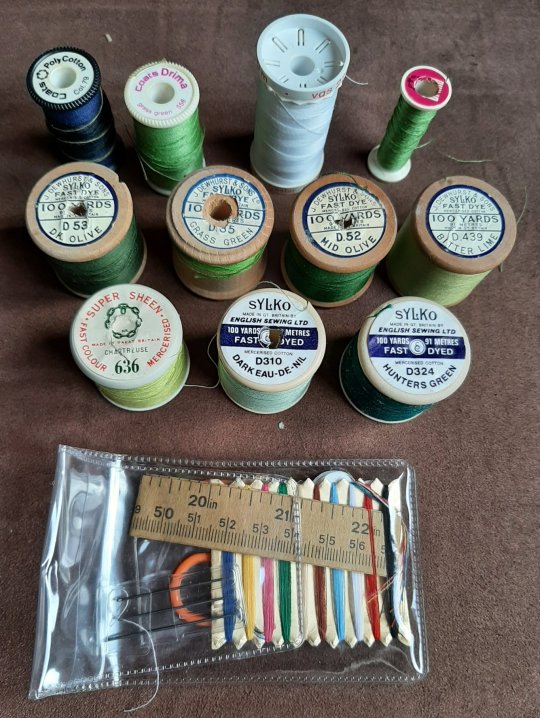
Contents: 11 reels of sewing thread of varying vintages and brands, some likely older than I am, and a travel type sewing kit in a clear plastic wallet complete with mini scissors, needles, and a tape measure

This one reel appears to have a tiny bit of surface mould, but I'm hoping it'll clean up with no issues since it appears so minor. I'll separate it from the rest and see how it goes
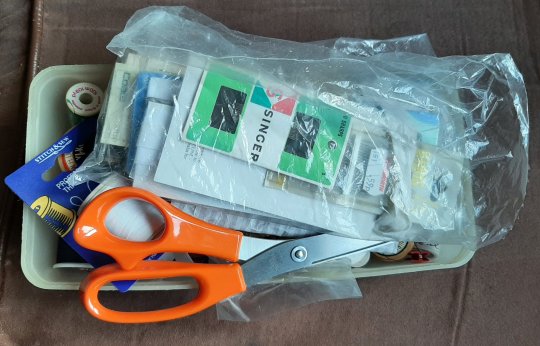
This box is much larger than the first
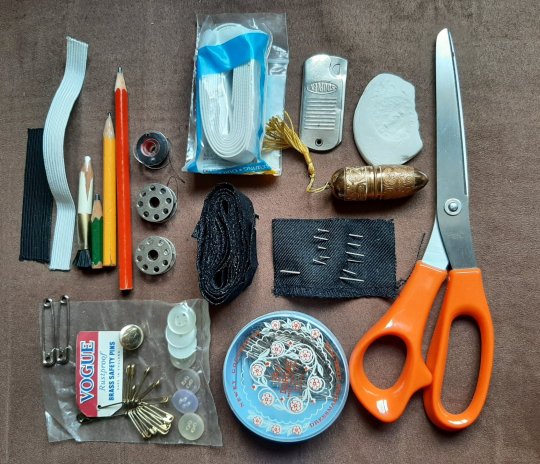
Here we have pins, needles, safety pins, scissors, 3 sewing machine reels, pencils, buttons, a pieces of tailors chalk, various bits of elastic, and two other items
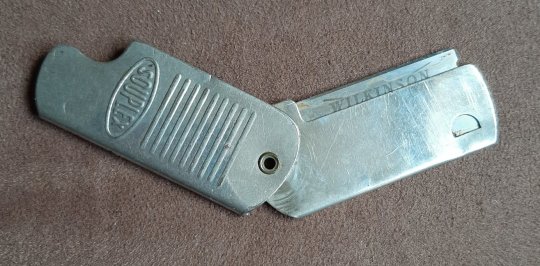
One is this 'sewers switchblade', a thread/fabric cutter consisting of a razor blade held in a folding case that makes it's own blade cover and handle
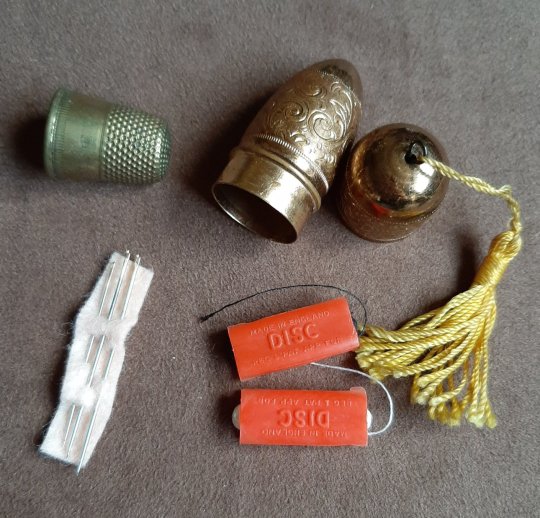
And the other is this small bullet shaped emergency sewing kit which contains a thimble (in need of a good clean) a strip of felt holding 3 sewing needles, and two small reels of black and white thread
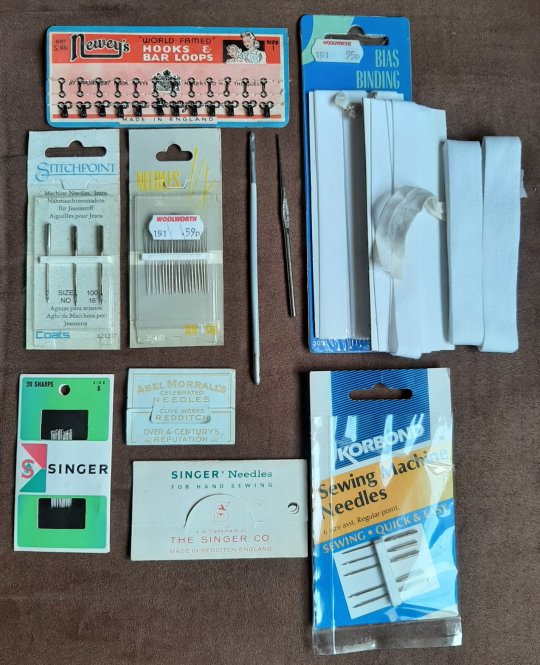
Also in the box are this assortment of machine and hand needles, some hooks and eyes, white bias binding and two well used crochet hooks of as yet unknown size
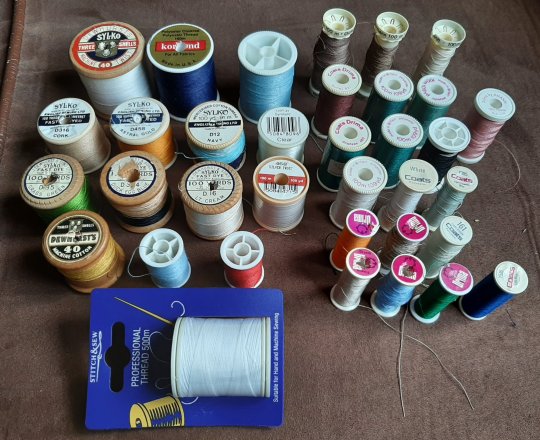
And under all of that are 35 reels of sewing thread of varying vintages and brands

Idk just how old some of these supplies are, but this reel of thread has a Woolworths price sticker on it and not only did Woolworths shut it's UK stores in Dec 2008/Jan 2009, but with the older logo on the sticker and a price of 20p marked on it I'm pretty sure it predates that closure by a broad margin
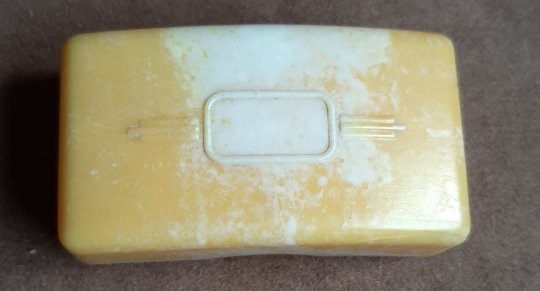
This small case was also in the bottom of the box with the thread reels
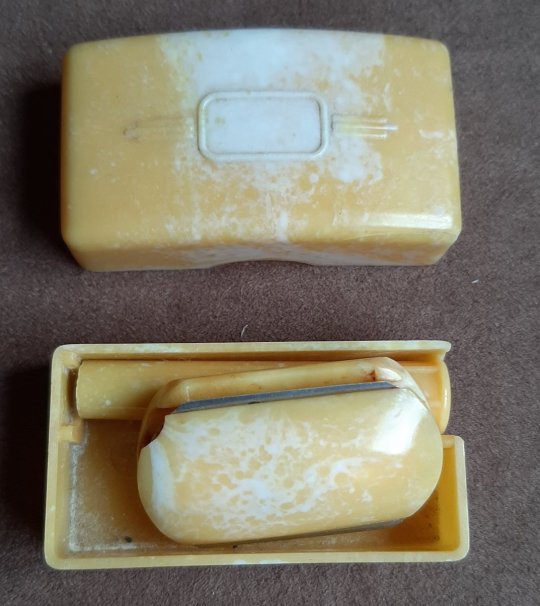
Opening it up reveals this
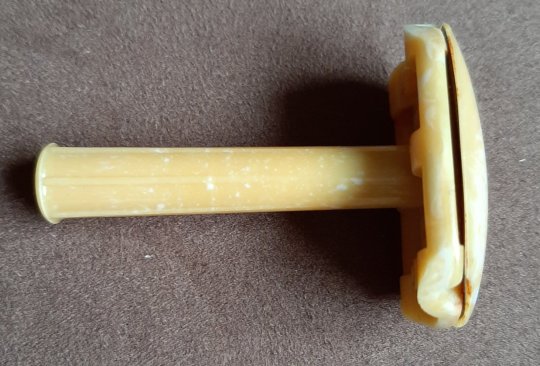
which assembles into a travel razor.
Why that was stored with the sewing supplies I have no idea
RIP Dorothy, I shall use your sewing supplies to the best of my ability and think of you when I do so. But I think I'm happy to let the razor go.
13 notes
·
View notes
Photo




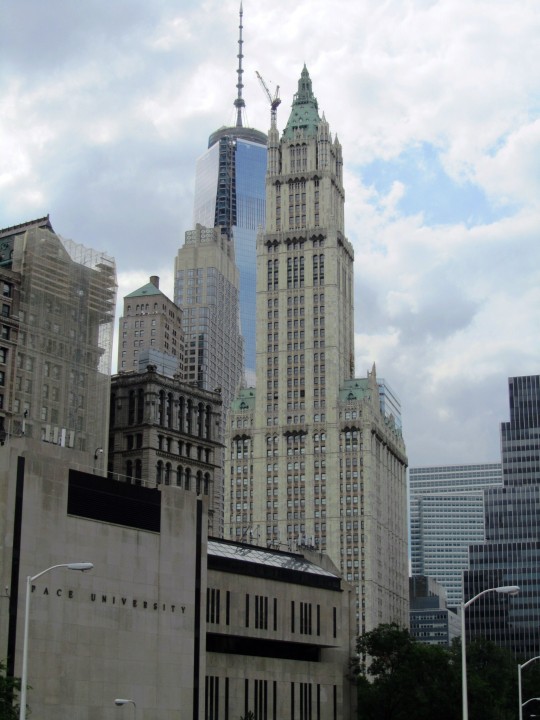



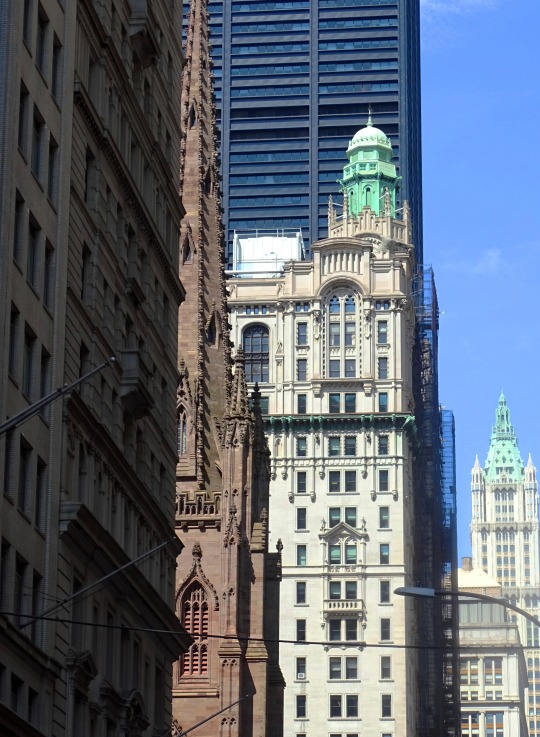
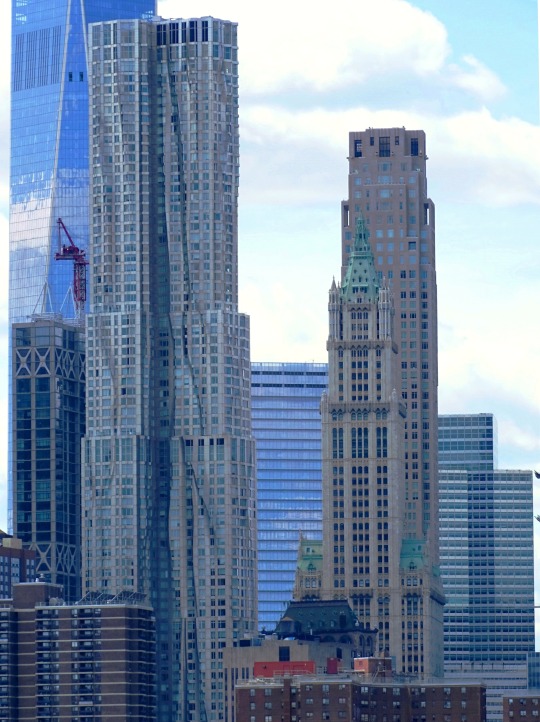
In Utica, New York, Frank Woolworth opened the first of many of five-and-dime Woolworth stores on February 22, 1879.
#Frank Woolworth#first store#22 February 1879#anniversary#US history#summer 2013#233 Broadway#Woolworth Building#Tribeca#New York City#Lower Manhattan#Cass Gilbert#architecture#cityscape#skyscraper#travel#vacation#tourist attraction#original photography#neo-Gothic style#Trinity Building#East River#Brooklyn Bridge#Brooklyn#DUMBO#USA#One World Trade Center#New York by Gehry#8 Spruce Street#skyline
3 notes
·
View notes
Text
Where to Purchase Isopropyl Alcohol: A Comprehensive Buying Guide

Isopropyl Alcohol is a versatile product widely used for cleaning, disinfecting, and medical purposes. Whether you're disinfecting surfaces, cleaning electronics, or using it in a first-aid kit, knowing where to purchase it can make a big difference. This guide will help you understand the best places to buy isopropyl alcohol and other related products like Sterile Water for Injection or Bacteriostatic Water.
understand the best places to buy isopropyl alcohol and Bacteriostatic water
1. Pharmacies and Drugstores
Pharmacies are one of the most common places to purchase isopropyl alcohol. Stores like Chemist Warehouse and Priceline in Australia often stock isopropyl alcohol in different concentrations, including 70% and 99%. You can also find medical-grade products, such as Sterile Water for Injection or Bacteriostatic Water. These products are often used for medical purposes, such as preparing injectable medications, but are also available for general use.
Tip: When visiting your local pharmacy, look for different bottle sizes. For small tasks, a 100ml or 250ml bottle of isopropyl alcohol will do. For larger jobs, pharmacies often stock 500ml or 1-litre bottles.
2. Supermarkets
Major supermarkets like Coles and Woolworths often stock isopropyl alcohol in the cleaning section. While the selection may be smaller than in pharmacies, it is still convenient to pick up a bottle during your grocery shopping trip. These stores may also carry Sterile Water for Injection 10ml for household use or minor medical needs.
3. Online Retailers
Online shopping offers convenience and variety, making it easy to find exactly what you need. Websites like Amazon, eBay, and Catch have a wide range of isopropyl alcohol products available. If you’re looking to buy in bulk or want specific concentrations (like 99% for electronics cleaning), online retailers are a great option.
In addition to isopropyl alcohol, you can also find products like Bacteriostatic Water or Bac Water online. These are often used for multi-dose medication reconstitution and can be purchased from specialized medical suppliers.
4. Medical Supply Stores
For larger quantities of isopropyl alcohol or medical-grade solutions, medical supply stores are the best option. These stores often stock more specialized products like Sterile Water for Injection 10ml or Bacteriostatic Water for injection. These solutions are commonly used for reconstituting injectable medications and other medical purposes.
Tip: If you need to reconstitute medications, such as peptides, consider visiting a medical supply store. They also carry related products, including syringes and Buy Distilled Water Adelaide for non-injectable purposes.
5. Hardware and Electronics Stores
For those using isopropyl alcohol to clean electronics or remove adhesives, hardware stores like Bunnings often stock high-purity alcohol (90% or above). Electronics retailers also carry isopropyl alcohol for cleaning sensitive devices and components.
Conclusion
Whether you’re buying isopropyl alcohol for medical use, household cleaning, or electronics maintenance, there are plenty of options available both in-store and online. Pharmacies, supermarkets, online retailers, and medical supply stores all offer isopropyl alcohol in different forms and concentrations, along with related products like Bacteriostatic Water, Sterile Water for Injection, and Bac Water. If you’re looking for high-quality bacteriostatic products, consider Bacteriostatic Water Australia for your needs. Always check the label for the concentration that suits your purposes, and shop around to find the best prices and suppliers.
#health#medical supplies#health & fitness#bac water#Isopropyl Alcohol#medication#bacteriostatic water#bacteriostatic water australia#sterile water for injection
3 notes
·
View notes
Photo
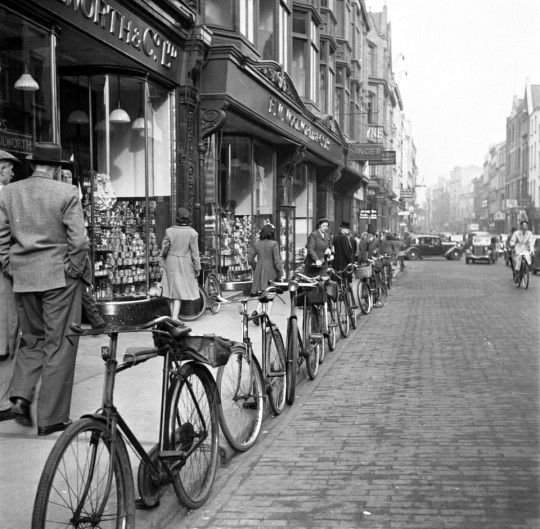
Woolworth’s, Grafton Street in the 1940s. It was the British chain’s first Irish store, opening in 1914 and housed in these beautiful Edwardian buildings. Suffered at hands of IRA in 1919 for selling British goods. Closed in 1984, the original buildings long torn down.
39 notes
·
View notes
Text
MOGAI BHM- Day 3!
happy BHM! today i’m going to be talking about the greensboro four and how they inspired the sit in movement!
The Greensboro Four-

[Image ID: A black-and-white photo of the “Greensboro Four”- four Black male college students. From left to right, they are David Richmond, Franklin McCain, Jibreel Khazan and Joseph McNeil. Two are wearing their college gowns, the other two are wearing long white trench coats. They are walking side by side in a building. End ID.]
The “Greensboro Four”, as they have come to be called, is a group of four Black students who, at the time, attended the Agricultural and Technical College of North Carolina, sparked one of the most well-known and effective movements of the Civil Rights Movement. Their names are Franklin McCain, Jibreel Khazan, Joseph McNeil, and David Richmond- four Black friends who decided to challenge the segregation laws that still subjected Black Americans to the ‘separate but equal’ fallacy in public places.
On February 1, 1960, the four men staged a sit-in at the lunch counter of the popular store Woolworth’s- which didn’t allow Black people to sit there. Although they feared for their safety, they nonetheless went to Woolworth’s and sat at the lunch counter. After being repeatedly asked to leave, they refused, placed their lunch orders, and though the police were called on them, they remained in their places until the store closed, when they left.
Soon after, they got in contact with other Black friends from their university and nearby universities and asked them to join them in future sit ins. The Greensboro Four were soon joined by a growing mass of Black students who sat with them at Woolworth’s lunch counter. At this point, they were faced with threats and harassment, but nobody was physically harmed. Thus, the sit in movement was born.
The Sit-In Movement-
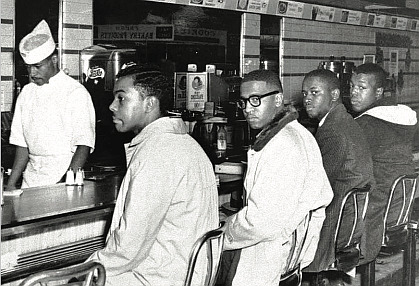
[Image ID: A black-and-white photograph of four Black men sitting at the counter of a lunch place. End ID.]
For months before the first Greensboro sit-in, students across North Carolina had been secretly meeting in houses, Church basements, and YMCA chapters to do underground work- they established phone networks, studied nonviolence and nonviolent protest tactics, and connected with each other to form underground networks of student activists. This dedication paid off after the first Greenboro sit-ins.
Black students spread the word about sit ins all across the South- college towns all across the US began to see a rise in Black students, occasionally accompanied by supportive white students, staging sit ins at segregated stores and restaurants. In the time directly following the Greensboro sit-ins, many stores were opened and closed and then opened again and de-segregated. This was all aided by the student-formed organization the Student Executive Committee for Justice along with Greensboro’s NAACP chapter. By the end of the month, over 30 towns across the US had been home to sit-ins staged by students.
These sit-ins were not spur-of-the-moment. They took months of planning, and each was only acquired through the dedication and work of every single student who participated. In Charlotte, NC, 200 students occupied all the downtown lunch bars. In Rock Hill, it was 300 students. They refused to back down and 4 months later, the Charlotte students saw success with all the downtown bars being desegregated.
Not even two weeks had passed since the first Greensboro sit in when, under the guise of the Nashville Christian Leadership conference, a partner organization under the Southern Christian Leadership Conference, students formed a wildly successful organization to coordinate sit-in efforts and encourage boycotts as well as other nonviolent methods of protest to oppose segregation.
On April 19, 1961, Alexander Looby, a Black lawyer who had been providing legal support to the students who participated in sit-ins, was targeted, and his house was destroyed by a bomber. In response to this, thousands of demonstrators marched to the steps of Nashville’s City Hall, where rising student activist Diane Nash directly confronted Nashville’s mayor, Ben West, forcing him to admit that segregation is wrong and that the lunch counters should be desegregated. After this, Nashville became the first Southern city to start the process of desegregating all of its public facilities.
Despite being arrested, beaten, and threatened, the students did not quit. They were unfairly arrested, beaten, threatened with unfair jail terms and fines, and through all of it, they did not give up. Sit ins raged across the South for years to come. The Freedom Movement grew rapidly out of the Sit-In Movement, and in 1964, the sit-in movement was a major inspiration for the passing of the Civil Rights Act of 1964, which officially illegalized segregation in all public facilities.
Sources-
https://files.nc.gov/dncr-moh/The%20Greensboro%20Four.pdf
https://www.crmvet.org/info/sitins.pdf
https://www.loc.gov/exhibits/odyssey/educate/lunch.html
51 notes
·
View notes
Text

The classifieds from The Tacoma News Tribune, year uncertain at this moment (I'd have to go through my scans folder since this copy was just titled "more.jpg") but 1960s, and it's clearly gendered.
HFC: The company still exists. The Villa Plaza mall does not.
This shopping center replaced the Catholic girls' school, Visitation Villa, that stood on the 100-acre property between 1923-1954. Tacoma developers Norman Iverson and Associates acquired the land from the Sisters of Visitation Order for $500,000. They spent $7 million to build the shopping center's first section that included 23 businesses configured in a U-shape around which was acres of free parking. The first portion of the development took up about 50 acres. Anchor tenants in 1957 included: J.C. Penney, Rhodes Brothers, Lerner's, W.T. Grant, F.W. Woolworth and a Firestone Tire Store. Villa Plaza Shopping Center operated from 08/1957 until c. 1985. In 1985, a local developer, Basil Vyzis, bought the complex and promptly tore it down to build Lakewood Mall, which opened for business in 1989. Lakewood Mall, in turn, languished, and was largely demolished in 2001. The Lakewood Towne Center complex was developed in 2002. [source]
Scotty's Cafe: Was established in 1930, and the location [29 Tacoma Ave North] would later become home to The Harvester.
A&W on Sixth Avenue: No longer exists after A&W scaled back operations in the 1980s-1990s. Amused by how they seek single female high school students, single female college students, but married female adults... when it's the single female adults that really need the jobs to support themselves. *shrug*
Vet receptionist: The listing doesn't say what clinic this was for, or include that you must love dogs (and cats, and tolerate reptiles and birds, and be ready if any barnyard animals were brought in).
11 notes
·
View notes
Text

Brute force in the service of religious nationalism
July 1, 2023
ROBERT B. HUBBELL
JUL 1, 2023
On Friday, the Court’s reactionary majority issued opinions in two cases that did not include a constitutional prerequisite to the Court’s jurisdiction—that the issue to be decided presents an actual “case or controversy.” That requirement is set forth plainly and simply in the Constitution. You can look it up.
Instead, the reactionary majority ignored the absence of jurisdiction and proceeded to issue decisions in fake controversies because they can. Looking for deeper meaning is pointless. The reactionary majority has reduced the rule of law to brute force in the service of religious nationalism.
I will briefly address the constitutional issues below, but before I do, it is appropriate to set aside legal arguments to discuss the human dimensions of the majority’s ruling in 303 Creative. The majority ruled that a business offering creative services to the public can refuse to provide those services to LGBTQ people if the business claims doing so will impair its right to free speech. Forget the procedural background and the judicial arm-waving designed to distract us. At root, the decision authorizes American business owners to discriminate against LGBTQ people. Period. It is a first step, taken in bad faith and wrapped in lies.
I listened to an interview with the plaintiff in the case who said, “There are lots of other web design businesses where gay couples can take their business.” That statement betrays a profound ignorance of the injury inflicted by the new right to discriminate against LGBTQ people. In 1960, there were plenty of lunch counters that would give a seat to a Black customer ordering a cup of coffee. But the fact that the Woolworth’s store in Greensboro refused service to a single customer because of the color of his skin was the injury. It did not matter that he could buy a cup of coffee down the street or across town. The injury was the refusal to serve a customer on account of race. And it was an injury to every Black person in America, whether they entered Woolworth’s or not. Separate but equal is not equal. It is discrimination.
So, too, with the ruling in 303 Creative that a business can turn away an LGBTQ customer. It does not matter that the customer can go elsewhere; the injury is the refusal to serve that customer. And it is an injury to every LGBTQ person in America—whether they choose to patronize 303 Creative or not.
And it is more than a “legal” injury. It is an injury to every LGBTQ teenager wondering where they fit into a society that says they are fair game for discrimination because . . . because why? Are they “less than?” Is the core of their personhood an “affront” to an angry Christian god? Are their feelings of love for another person “wrong” or “immoral?”
Those are the messages that Amy Barrett, John Roberts, Neil Gorsuch, Sam Alito, Clarence Thomas, and Bret Kavanaugh have sent to every gay teenager—and adult—in America. Their decision is reprehensible and morally wrong. It is harmful, mean-spirited, un-Christian, and depraved. And they know so. Otherwise, they would not have contorted themselves into human pretzels to issue a ruling in a fake case fabricated by activist lawyers that presented no victim, no injury, and no case or controversy. In their haste to enshrine another tenet of Christian nationalism, they have violated their oaths to the Constitution at the most basic level.
I hope you can tell that I am angry about this decision. I hope you are angrier. We cannot let this decision stand. We must rally to support LGBTQ people and their families during a time of anxiety and fear that their hard-won gains of the last half-century are evaporating. And we must raise our voices in protest and anger so that the reactionary majority understands that it has crossed a line—many lines—in the last year. They must understand that they will soon be in the minority of a Court that is 13 or 17 or 29 members. The time for hand wringing and half-steps has passed. Real people have lost real liberties—starting with Dobbs and ending 303 Creative. If we do not stand up to protect them with every ounce of our will, we deserve what’s coming.
As to the fabricated nature of the 303 Creative case, I refer you to Ian Milliser’s excellent article in Vox, Supreme Court LGBTQ ruling: Neil Gorsuch has a problem with telling the truth, in 303 Creative v. Elenis. I will quote liberally from Millhiser, but please read his original article for additional important details. Millhiser writes,
“The case centers on Lorie Smith, a website designer who wishes to expand her business into designing wedding websites — something she has never done before. She says she’s reluctant to do so, however, because she fears that if she designs such a website for an opposite-sex couple, Colorado’s anti-discrimination law will compel her to also design wedding websites for same-sex couples. And Smith objects to same-sex marriages.
“The frustrating thing about this case is that it involves an entirely fabricated legal dispute. Again, Lorie Smith has never actually made a wedding website for a paying customer. Nor has Colorado ever attempted to enforce its civil rights law against Ms. Smith. Indeed, in its brief to the Supreme Court, Colorado expressed doubt that its anti-discrimination law would even apply to Smith.
“Yet Gorsuch’s majority opinion repeatedly paints Smith as a hapless victim, oppressed by wicked state officials who insist that she must proclaim a dogma that she denies. As he writes in the very first paragraph of his opinion, “Colorado does not just seek to ensure the sale of goods or services on equal terms. It seeks to use its law to compel an individual to create speech she does not believe.”
“This claim is simply untrue. Colorado has not brought any enforcement action against Smith, or taken any other step to compel her to say anything at all — or to design any website that she does not want to design. Nor has anyone ever sued Smith for allegedly violating Colorado’s anti-discrimination law.
“Indeed, in one particularly amusing turn, Smith alleged during an early stage of this litigation that she was approached by a man about doing some design work for his wedding to another man. Yet, after the New Republic’s Melissa Gira Grant contacted this man, she learned that he never reached out to Smith — and that he was married to a woman.”
The reactionary majority knows that Smith’s claim that she was approached to create a website for a gay man is likely untrue. But instead of jealously guarding the Court’s jurisdiction by applying the “case or controversy” requirement, it simply ignored the fabricated nature of the claim to issue an advisory opinion that amounts to a legislative repeal of a Colorado statute.
Justice Kagan wrote in dissent:
“Battling discrimination is like “battling the Hydra.” Whenever you defeat “one form of . . .discrimination,” another “spr[ings] up in its place.” Time and again, businesses and other commercial entities have claimed constitutional rights to discriminate. And time and again, this Court has courageously stood up to those claims—until today. Today, the Court shrinks. [¶¶¶]
“Today is a sad day in American constitutional law and in the lives of LGBT people. The Supreme Court of the United States declares that a particular kind of business, though open to the public, has a constitutional right to refuse to serve members of a protected class. The Court does so for the first time in its history. By issuing this new license to discriminate in a case brought by a company that seeks to deny same-sex couples the full and equal enjoyment of its services, the immediate, symbolic effect of the decision is to mark gays and lesbians for second-class status. In this way, the decision itself inflicts a kind of stigmatic harm, on top of any harm caused by denials of service. The opinion of the Court is, quite literally, a notice that reads: “Some services may be denied to same-sex couples.”
There is so much more to say on this topic, but I will stop here for the evening. I urge readers to express themselves in the Comments section, which is open to everyone this weekend. As always, be respectful.
The reactionary majority utilized the same gambit in the student loan forgiveness case. As explained by Mark Joseph Stern in Slate,
“The biggest question in the case was whether anyone could establish standing to challenge the program in the first place. After all, the federal government itself holds this debt, and no one is obviously “injured” by the government helping somebody else by erasing their debt.
“Missouri tried to get around this problem by fixating on MOHELA, a corporation created by the state that services student loans. The Missouri attorney general asserted that MOHELA would suffer financially because of Biden’s plan—which turns out to be false—and that the state itself could represent its interests in court.
“A key flaw in this reasoning is that MOHELA is an independent entity from Missouri that could have sued to defend its own interests, but refused to do so, and even refused to help Missouri “represent” it in court.
“Roberts didn’t care about any of that. MOHELA is “an instrumentality of Missouri,” he wrote, and Biden’s plan “will cut MOHELA’s revenues.” (Again: provably false!) “
So, even though the actual party in interest—the corporation that serviced the student loan debt—refused to file suit or assist Missouri in the appeal to the Supreme Court, John Roberts found that Missouri could assert the interests of a party not before the Court and which claimed no injury.
John Roberts didn’t care about the absence of jurisdiction. He was too eager to ensure that students who borrowed to get an education pay every penny they owed. Of course, it turns out that the largest block of borrowers who would have benefitted from the loan forgiveness plan are Black women. See US Census Bureau, Student Debt Weighed Heavily on Millions Even Before Pandemic.
Per the Census Bureau,
“Women overall were 28% more likely than men to have student debt. “In 2017, non-Hispanic Black women were the most likely of any gender group to have student loans. About 1 in 4 non-Hispanic Black women had student debt, compared to 1 in 8 non-Hispanic White men.”
And, according to ABC News,
“Black women, in particular, carry a disproportionate burden of student debt. They hold nearly two-thirds of the nearly $2 trillion outstanding student debt in the U.S., according to data from the Census Bureau.”
John Roberts has now authored three opinions that disadvantage Black Americans—in voting (Shelby County), educational access (Students for Fair Admissions), and debt relief (Biden v. Nebraska). At some point, it is too coincidental to be a coincidence that it is always John Roberts pulling up the ladder from Black Americans with the wag of his finger and a condescending “Tsk, tsk.”
Roberts was clearly stung by Elana Kagan’s dissent in the student loan case. He wrote,
“It has become a disturbing feature of some recent opinions to criticize the decisions with which they disagree as going beyond the proper role of the judiciary. “We have employed the traditional tools of judicial decision-making in doing so. Reasonable minds may disagree with our analysis — in fact, at least three do.
“We do not mistake this plainly heartfelt disagreement for disparagement. “It is important that the public not be misled either. Any such misperception would be harmful to this institution and our country.”
“The lady doth protest too much, methinks.” The fact that John Roberts inserted the defensive footnote designed to “mansplain” what Justices Kagan, Sotomayor, and Jackson are saying is insulting. They have, in fact, said plainly that the reactionary majority’s rejection of precedent and resort to advisory opinions based on lies is “harmful to the Court and our country.” Don’t pretend that their cries of “foul” are “heartfelt disagreement.” They are not. They are saying the Court has eroded its legitimacy and is acting as a roving legislature. Read the room, John.
[Robert B. Hubbell Newsletter]
#Robert B. Hubbell#Robert B. Hubbell Newsletter#Christian Nationalism#injustice#discrimination#LGBTQ#corrupt SCOTUS#Opus Dei SCOTUS
8 notes
·
View notes
Text
A Post-Internet World
I was watching The X-Files earlier. Season 1, which aired in 1993. It’s a fun show; and as a 90s boy (me being born in 1992), it took me back to that hazy world, where the music was different, the haircuts different, even the colour of the streets seemingly different.
The characters step into phone booths to make calls. They still have those televisions which are massive black boxes which flash with those black & white dots when not hooked on to a channel. They still read broadsheet newspapers. I’ll admit a nostalgia for the 1990s and TV shows from that pre-Sopranos age.
But it got me thinking about the main thing missing from the daily lives of people back then.
The internet. They don’t use the internet; it’s just not there … Which is surreal when you compare it to 2023, when all of us are constantly wired to the internet.
So it got me thinking about just how much the world wide web has altered the planet, since the era I mentioned above, when I was a child.
1993 is a convenient year, because this is when the first proper web browser was released to the public. Amazon and eBay were invented in 1995, and Google in 1998. Wikipedia was born in 2001. In 1993, 1% of information fed through global telecommunications networks was performed via the internet. In 2023, it is 100%.
What about TV shows? Well – you remember Blockbuster, right? The video store. That’s what you’d do on a Friday night, go and rent a VHS out to watch the X-Files. Well, Blockbuster declined heavily after the explosion of the internet, and closed its last store in Alaska in 2018.
The internet also killed Toys R Us, RadioShack, Virgin Megastores (in terms of high street shops, in the West), the Discovery Channel Store, Borders book shop, Hastings Entertainment, Dixons entertainment, Woolworths, Sears (which was once the world’s largest retailer) and GameStop, to name a few.
Furthermore, there are whole industries which have had to adapt to the WWW. Pre-internet, and up until the new millennium, almost all books were sold in bookstores, as physical copies. Today, 80% of books are sold online. Specific types of books are no longer bought on demand; such as encyclopedias, dictionaries, travel guides or maps – all of which are easier to access online.
Landlines … for your phone in your house. In the 1990s 9 in 10 of households used their landline phone as a main way of communication. Today it’s 9 in 10 with cellphones.
Journalism. From 2005 to 2021, over 2200 American print newspapers closed in the US; and from 2008 to 2020, the number of American newspaper journalists were cut by half. Similarly, in the UK, around 300 newspapers died away between 2009 and 2019.
The music industry. Is an obvious one, and among those most severely struck. Whilst the net made it far easier to pirate music, platforms such as Apple Music and Spotify removed the need for illegal listeners. The industry itself was among the most profitable in the 1990s. Within the last 20 years its revenue has been reduced by 50%, when taking all sources into account. CD sales reached their peak in the year 2000 in America (a figure of around 900 million). Since then sales have dropped 95%.
And, on a grander scale, we can’t ignore how the internet has altered how we socialise. We spend more time on the internet in our daily lives that we do via communicating with other people face to face.
It’s changed the way we read, and the amount that we read. People are far more likely to skim read articles on a screen and not read beyond the initial three or four paragraphs, especially if this requires clicking ‘next page’ to read on. Writers on the internet now write shorter sentences in order to hold reader attention span.
The internet has changed crime. Through cybercrime, as people find it easier to steal money from long distance locations whilst hiding their identities. It is estimated that over $600 billion is lost (or robbed) each year via cyber criminals.
It’s changed the way people date. People who use dating apps are more likely to have sex sooner in a relationship than those who meet in the ‘traditional’ way; and are more likely to date several people at once before choosing a specific individual. Moreover, it has made people less likely to commit, because with internet dating, they have far more options.
Most of this essay has been negative. One can’t deny that the internet has many positive sides to it too. With Healthcare, for instance: as people are able to communicate with their doctors without having to physically attend a GP, thus making it faster. And in terms of education – one can basically look up any information they please at any point. Rather than having to head to a library or school.
I use the internet all the time as well. Am no different. I suppose it just felt odd, watching the X-Files earlier, as it gave me that dose of what it was like in boyhood. There was Twin Peaks, as well, and Friends, you know, all of those classic 90s shows. I used to watch them on one of those gigantic televisions, which only had four channels.
In 1993, around 15 million people used the internet. Nowadays, over 4.66 billion people are online. That’s less than 1% of the world population in 93, to around 60% of the world population now.
I miss the 1990s. It was a great decade for things like television, and film, and music. Culture in general. The irony is that I no longer own a VHS player. And I was using a streaming site to watch the X-Files earlier. I should feel lucky to have experienced that last-decade-before-the-internet. To belong to the millennials generation.
What I do still have is a retro TV (with the black & white scrambly dots), and a Nintendo 64 and Playstation, oh – and a great collection of CDs. And they’re never getting chucked out, ever. Will keep them, always.
#writeblr#essays#history of the internet#history of communications#x files#1990s tv#classic tv#blockbuster#how the internet has changed the world#history of culture#cinema#journalism#music industry
6 notes
·
View notes